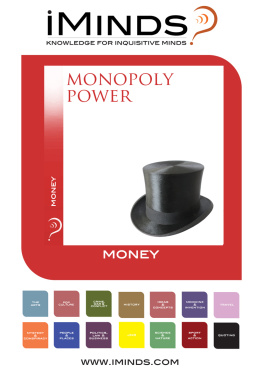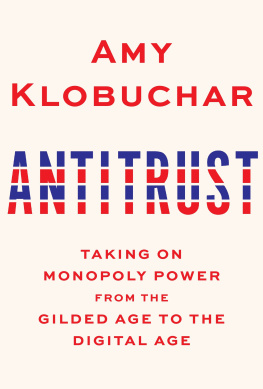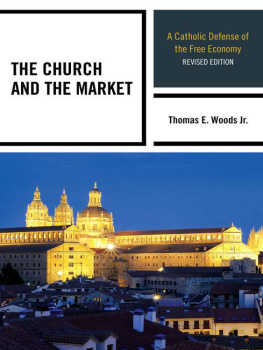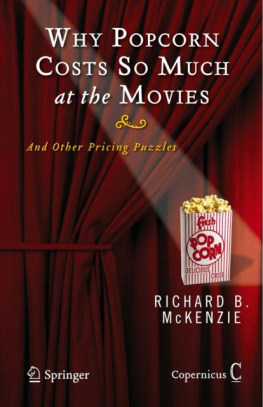Richard McKenzie - In Defense of Monopoly: How Market Power Fosters Creative Production
Here you can read online Richard McKenzie - In Defense of Monopoly: How Market Power Fosters Creative Production full text of the book (entire story) in english for free. Download pdf and epub, get meaning, cover and reviews about this ebook. publisher: University of Michigan Press, genre: Politics. Description of the work, (preface) as well as reviews are available. Best literature library LitArk.com created for fans of good reading and offers a wide selection of genres:
Romance novel
Science fiction
Adventure
Detective
Science
History
Home and family
Prose
Art
Politics
Computer
Non-fiction
Religion
Business
Children
Humor
Choose a favorite category and find really read worthwhile books. Enjoy immersion in the world of imagination, feel the emotions of the characters or learn something new for yourself, make an fascinating discovery.

- Book:In Defense of Monopoly: How Market Power Fosters Creative Production
- Author:
- Publisher:University of Michigan Press
- Genre:
- Rating:5 / 5
- Favourites:Add to favourites
- Your mark:
- 100
- 1
- 2
- 3
- 4
- 5
In Defense of Monopoly: How Market Power Fosters Creative Production: summary, description and annotation
We offer to read an annotation, description, summary or preface (depends on what the author of the book "In Defense of Monopoly: How Market Power Fosters Creative Production" wrote himself). If you haven't found the necessary information about the book — write in the comments, we will try to find it.
In Defense of Monopoly: How Market Power Fosters Creative Production — read online for free the complete book (whole text) full work
Below is the text of the book, divided by pages. System saving the place of the last page read, allows you to conveniently read the book "In Defense of Monopoly: How Market Power Fosters Creative Production" online for free, without having to search again every time where you left off. Put a bookmark, and you can go to the page where you finished reading at any time.
Font size:
Interval:
Bookmark:
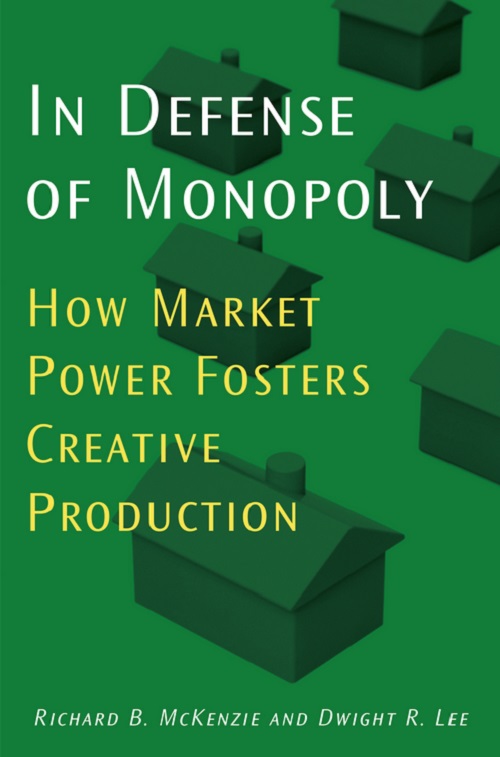
Richard B. McKenzie and Dwight R. Lee
The University of Michigan Press
Ann Arbor
Page iv Copyright by the University of Michigan 2008
All rights reserved
Published in the United States of America by
The University of Michigan Press
Manufactured in the United States of America
No part of this publication may be reproduced, stored in a retrieval system, or transmitted in any form or by any means, electronic, mechanical, or otherwise, without the written permission of the publisher.
A CIP catalog record for this book is available from the British Library.
Library of Congress Cataloging-in-Publication Data
McKenzie, Richard B.
In defense of monopoly : how market power fosters creative production / Richard B. McKenzie and Dwight R. Lee.
p. cm.
Includes bibliographical references and index.
ISBN-13: 978-0-472-11615-7 (cloth : alk. paper)
ISBN-10: 0-472-11615-0 (cloth : alk. paper)
1. Monopolies. 2. Production (Economic theory) I. Lee, Dwight R.II. Title.
HD2757.2.M34 2007
338.8'2dc22 2007035404
ISBN 978-0-472-90114-2 (OA ebook)
Page v for
Charlie
Page vi Page vii A systemany system, economic or otherthat at every given point of time fully utilizes its possibilities to the best advantage may yet in the long run be inferior to a system that does so at no given point of time, because the latters failure to do so may be a condition for the level or speed of long-run performance.
Joseph A. Schumpeter
Capitalism, Socialism, and Democracy (1942, 83; emphasis in the original)
Most adults in the United States and much of the industrialized world today can vividly remember as children playing their way through marathon Monopoly games. Few have come close, however, to challenging the length of the longest Monopoly game in history (which dragged on for 1,680 hours, or seventy straight days).
Although the board game involves key market institutionsmoney, a bank and banker, deeds, trades, and wealth accumulationonly a modicum of business savvy is required to win. Accordingly, ten-year-old kids can beat their parents, who may be astute, seasoned business people, mainly because the competition among the players is highly constrained by detailed rules, the layout of the board, and elements of luck that are introduced through required tosses of the dice and draws of the cards of chance. The games popularity is probably attributable in no small way to the fact that it taps into twin passions: to win and to acquire wealth (even play wealth).
Each players best strategy for winning is often to buy up all properties of given colorsfor example, all the green properties of Pennsylvania, North Carolina, and Pacific Avenuesand then add (plastic) houses or hotels to them. We can only surmise that the game is called Monopoly because the rent that property owners can charge when another player lands on any particular property escalates both with the number of properties of a given color owned and with the number of houses and hotels that owners buy for each property. Market dominance translates into a form of monopoly rents, loosely defined.
The player who is able to buy both Boardwalk and Park Place (the only two blue properties) and put the maximum of four hotels on each has a good chance of winning, given that the rents on those properties are then the highest on the board. Of course, the owner of those two properties can be assured of their monopoly in the game because the players are trapped: They each in turn must throw the die and must follow in lockstep the route, square by square, around the board, which means that players must run the risk of landing on the monopolized properties. However, winning by developing monopolies on properties of given colors is never assured, mainly because of the properties costs and the several elements of chance.
Economists play another monopoly game in their textbooks (and classroom Page xiv lectures) that is not totally unlike the board game. Like the board game, the economists textbook monopoly game is also highly constrainednot, of course, by the printed surface of a piece of cardboard, but by an underlying, explicitly stated set of assumptions. Economists start by loosely attributing the status of monopoly to any firm that has market power, that is, the firm is sufficiently dominant in its market and sufficiently protected by barriers to the entry of potential rivals that the monopoly can raise its prices and capture economic rents or monopoly profits by restricting output below the idealized competitive output level. The assumption underlying the economists monopoly game that lines up best with the Monopoly board game is that the more control a firm has over a carefully defined, given market (or the greater the firms market dominance, often defined as percentage of all market sales) and the more the firm is protected from market entry of rivals, the more economic rents the monopolist can earn.
But there is another way the two games align: The prospects for creativity and improvement in both games are nil. In the case of the board game, the board and the properties on the board are given. That is to say, they are not created by the players in the course of the play. Their market values are also predetermined and fixed. The rent to be made on each property is also given and fixed, which is to say that the rent is merely extracted by the property owners, as opposed to being created by them. No new properties can be added, and neither can the existing properties be subdivided and reconfigured to enhance the value of all properties. It follows that a players rent from becoming a monopolist over Boardwalk and Park Place will never affect the creation of new properties by others, which, of course, means that players have every reason to charge what the game (and market) will bear at the time of play. Because nothing is created or destroyed by the play of the Monopoly, the game can always be used again, with everything (rules, property values, and rents) remaining exactly the same.
In the case of the economists monopoly game, the monopolized good is also given to the textbook (and blackboard) analytics. That is, by assumption, the monopolist has nothing to do with its own emergence as a monopoly or the creation of its good and its market. The monopoly and its good and market are simply assumed into existence. With the shapes and locations of the monopolists demand and cost functions also given, again by assumption, there is not much more for economists to do in playing their model-building games other than move around their boards and deduce the monopolys output and price levels that maximize economic profits (or rents).
In the narrow context of the model, because the monopolist necessarily restricts output below the (idealized) competitive level, a self-evident ineffi-ciency Page xv exists in the allocation of resources mandated by the underlying assumptions and the rules of the monopoly model. The monopoly rent is merely extracted from the consumer surplus that is presumed to exist independent of whatever the monopolist may have done in the past or proposes to do in the future. Under such conditions, the fairness of the rent extraction is, at best, suspect. Again, this is because the monopolist, by assumption, had absolutely nothing to do with the creation of the monopolized good, the goods market, the protective entry barriers (which, under the model, serve only a negative economic function, that of permitting a curb in output), and the resulting consumer surplus and (hence) the monopoly rent that is extracted. Prices above marginal cost of production, of course, serve no value-creating function.
Next pageFont size:
Interval:
Bookmark:
Similar books «In Defense of Monopoly: How Market Power Fosters Creative Production»
Look at similar books to In Defense of Monopoly: How Market Power Fosters Creative Production. We have selected literature similar in name and meaning in the hope of providing readers with more options to find new, interesting, not yet read works.
Discussion, reviews of the book In Defense of Monopoly: How Market Power Fosters Creative Production and just readers' own opinions. Leave your comments, write what you think about the work, its meaning or the main characters. Specify what exactly you liked and what you didn't like, and why you think so.

